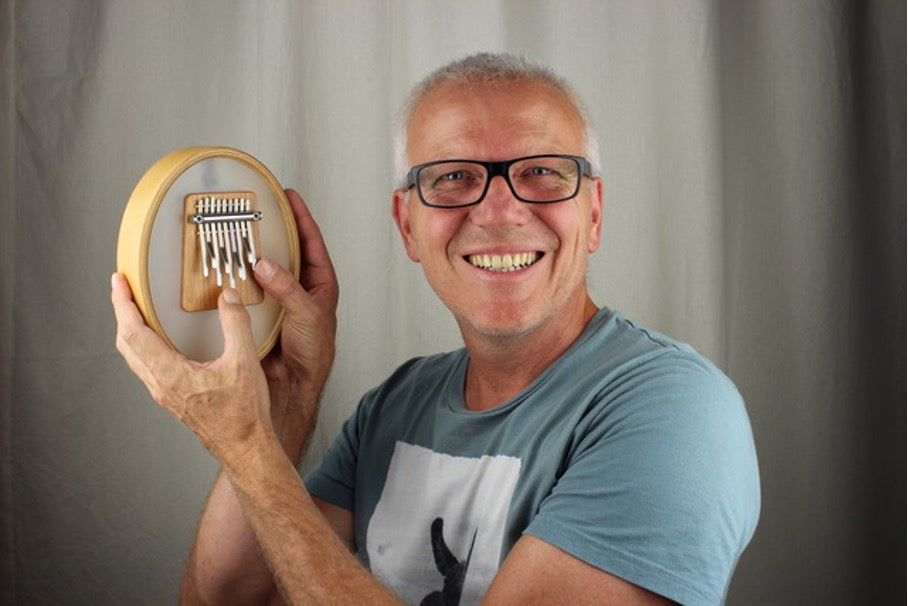In the portrait: Conny Sommer
In Portrait : Conny Sommer
Musician & Percussionist / Leipzig - Germany

Hello Conny, thank you for taking the time for this short interview.
… gladly !
Get up and then COFFEE.
Morning: Office, booking and practice
Afternoons & evenings: working on current projects, drum events, performances, lessons and sports.
Enough time for a second coffee in the morning, alertness, inspiration and a HOKEMA kalimba nearby.
It was always there, as far back as I can remember. My brother could build ANYTHING out of Lego when he was five. At the same time, as a four-year-old, I could recite my father's records and tapes by heart. At the same time, I started making music myself. First with a harmonica, later the trumpet, and from the age of 16, percussion.
I own one of the first classical kalimbas and one of the first sansulas that Peter Hokema built, since the company's history began in the 1980s. In 2016, I met Peter Hokema personally at a concert and have had a close partnership with the company ever since.
Very different: I like to use the 11-note Sansula at concerts for small melody and chord accompaniments. The 17-note Kalimba - usually retuned - in a similar way. The 9-note Sansula is often used for relaxation sessions at workshops.
Usually very emotional and very enthusiastic. Many are very surprised at how such a small instrument can sound so magical and versatile. And then you always have the exotic bonus when you play it live. It's not uncommon for me to find myself on stage with virtuoso musicians at smaller concerts who conjure up beautiful music in the hall all evening and at the end a crowd forms around the percussion terminal because everyone is interested in the kalimba, which could be heard for a few minutes in three or four well-placed places.
Anders: I don't understand why there are people who do NOT see these magical instruments as serious instruments. However, they have melodic limitations and are strictly diatonic, which is particularly problematic in music that modulates heavily.
The Kalimba B11 Elektro . Even though it is very limited melodically and harmonically, there are many possibilities for rhythmic and tonal development.
Conny Sommer is a professional percussionist. He has played live and in the studio for star tenor Rolando Villazón, the NDR Big Band, the NDR Radio Orchestra, the MDR Symphony Orchestra, Dieter Thomas Kuhn, Fehlfarben and many more. He was a member of the musical ensemble of "The Lion King" in Hamburg for 8 years, wrote numerous textbooks for various percussion and percussion instruments and taught at music colleges in Hamburg, Nuremberg and Leipzig. Since the mid-1990s he has been giving workshops for cajon, percussion, kalimba and handpan.
Interview: Sascha (Team Hokema)
